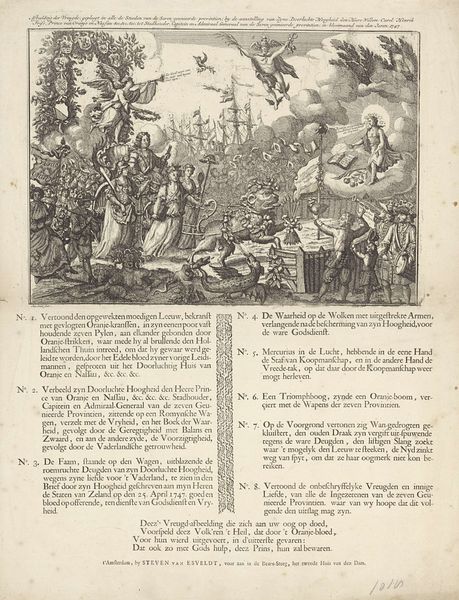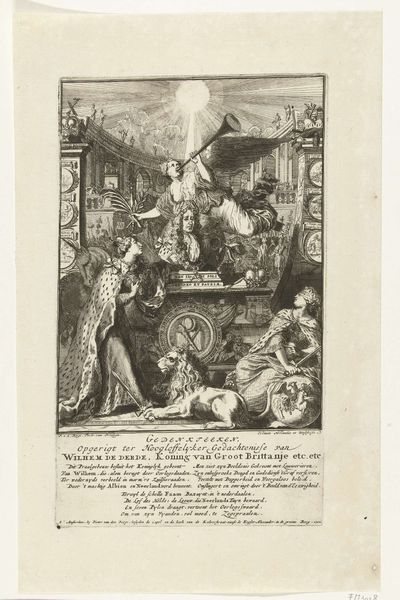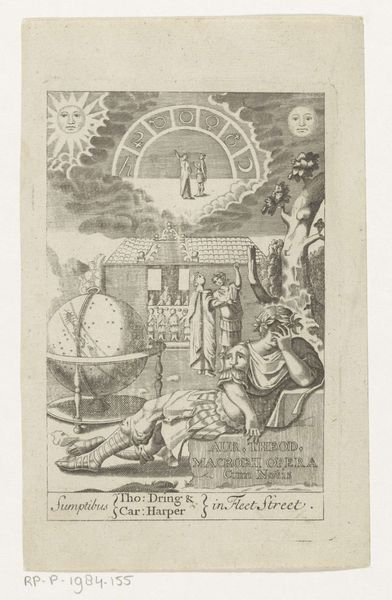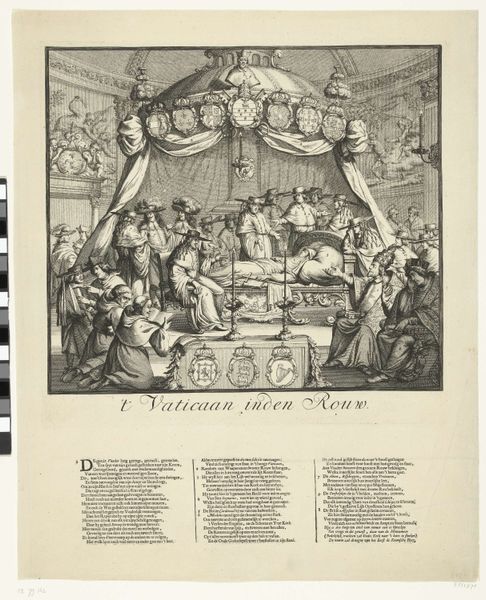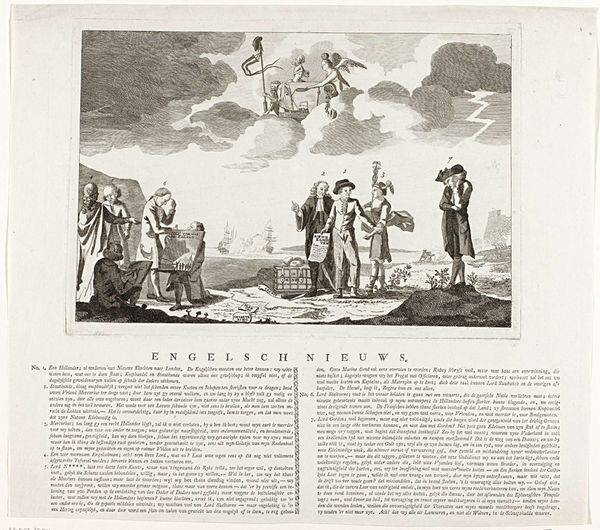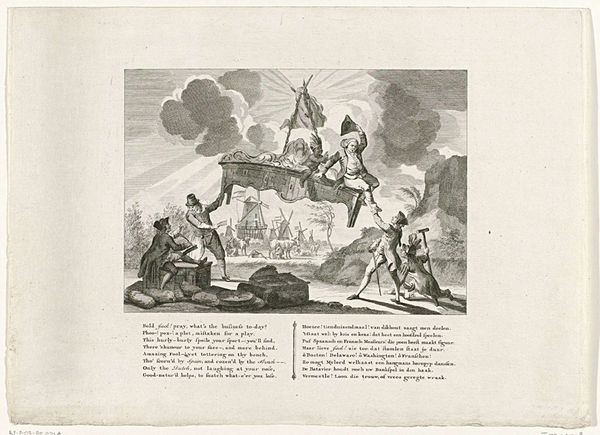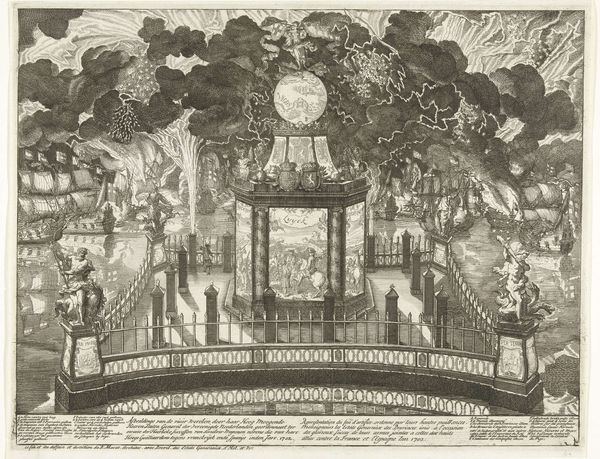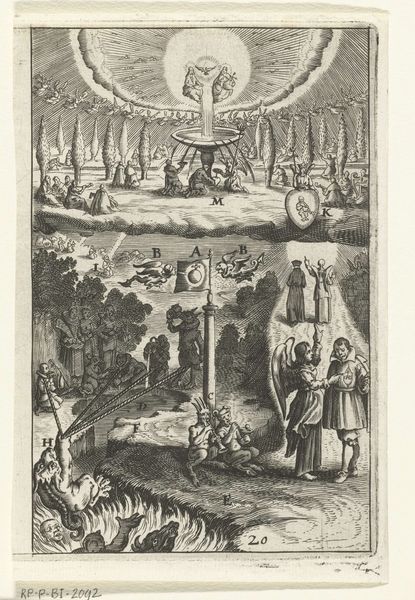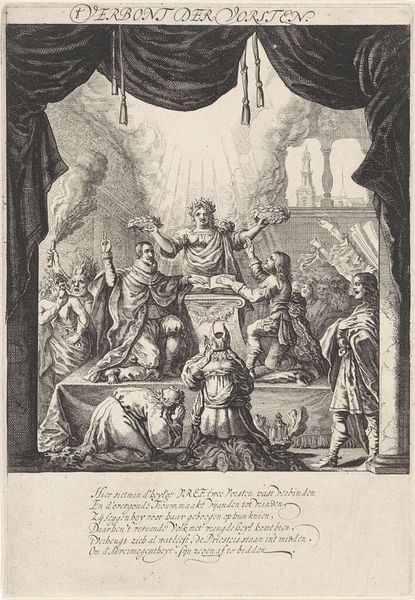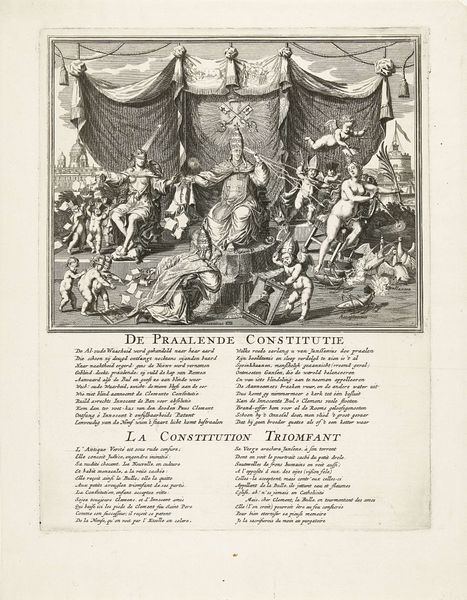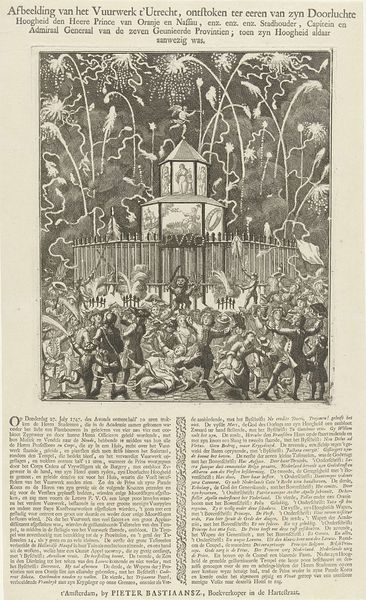
print, paper, engraving
#
portrait
#
allegory
#
baroque
# print
#
figuration
#
paper
#
line
#
history-painting
#
engraving
Dimensions: height 493 mm, width 382 mm
Copyright: Rijks Museum: Open Domain
Curator: We're looking at "Allegory on the Coronation of Francis I Stephen as Emperor, 1745," an engraving. Editor: It strikes me as rather busy, overflowing with detail, figures, and symbols jostling for space within the frame. Baroque, definitely! Curator: Precisely. This print, currently housed at the Rijksmuseum, commemorates the historical event of Francis I Stephen's coronation. However, it operates beyond a straightforward record; it's laden with allegorical meaning. The publisher remains anonymous. Editor: Let's delve into the composition. There’s a clear hierarchy at play here. The Emperor occupies a central position on a raised dais, bathed in light, suggesting divine endorsement. I notice the cherubic figures surrounding the emperor, but below, defeated figures and discarded weapons indicate those that opposed Francis. The radiant light emanating from above overwhelms almost everything. Curator: Absolutely. Light functions symbolically, almost divinely sanctioning his emperorship. Below the dais, the engraving shows prostrate figures, their arms scattered—visual symbols for conquered rivals or foes, brought to submission beneath his reign. Editor: How interesting. To my eye, the print appears a little propagandistic—designed to communicate and reinforce political authority. What could the meaning of the crests beneath the Emperor's platform refer to? Curator: Those represent the territories and states under his domain. They bolster Francis’s authority and solidify the notion of a unified empire under his rule. You can consider those crests as markers of legitimacy, demonstrating Francis I Stephen’s right to govern. Editor: It strikes me that, beyond merely capturing a historical occurrence, the composition presents Francis I Stephen’s imperial achievement, strategically positioning his rise to the throne amid historical rivalries and societal allegiances of the mid-18th century. Curator: You’ve pinpointed a key aspect: the historical placement of Francis as not only a ruler, but as a central figure. The visual symbolism here is used quite intentionally to reinforce legitimacy. Editor: This has opened up a much broader conversation beyond the work's intrinsic artistic value. Curator: Indeed; this allows a critical viewing of its cultural purpose and influence as well.
Comments
No comments
Be the first to comment and join the conversation on the ultimate creative platform.
